Clouded sulphur (Colias philodice)
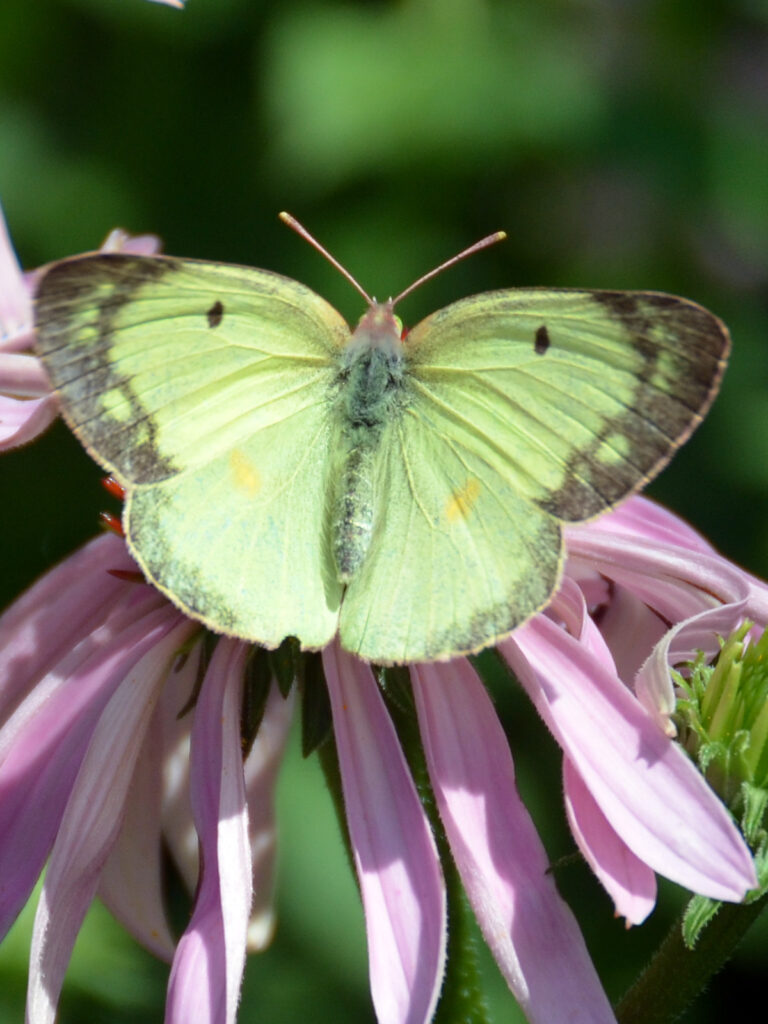
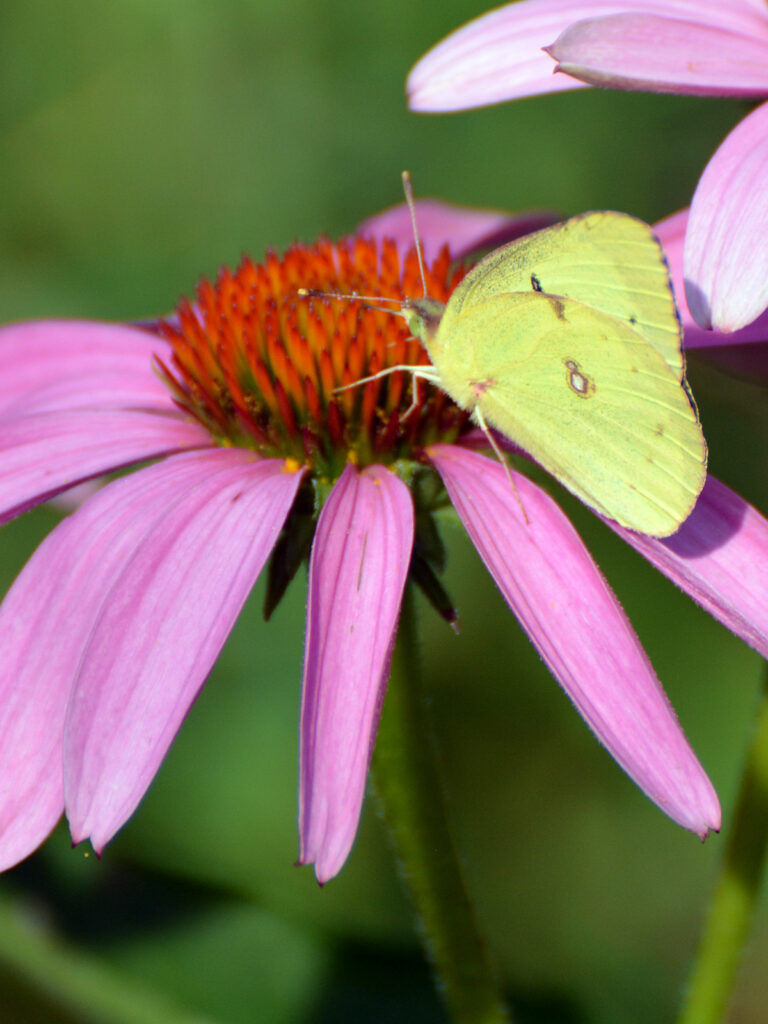
HOST PLANTS: White clover, alfalfa, and other legumes
- Learn more:
- Butterflies and Moths of No. Am.: Clouded sulphur
Banded hairstreak (Satyrium calanus)
I had especially noticed this butterfly nectaring on common milkweed and on New Jersey tea, then I happened to read that these plants are their favorites!
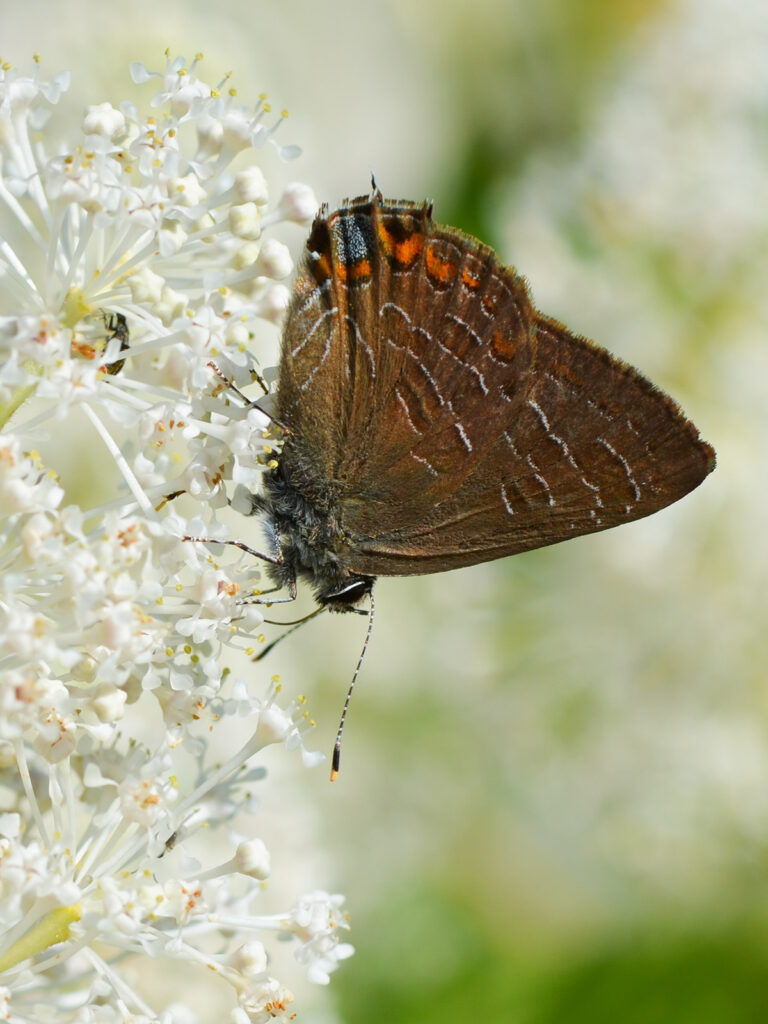
HOST PLANTS: Oaks, American chestnut, walnuts, hickories, butternut
- Learn more:
- Butterflies and Moths of No. Am.: Banded hairstreak
Spring azure (Celastrina ladon)
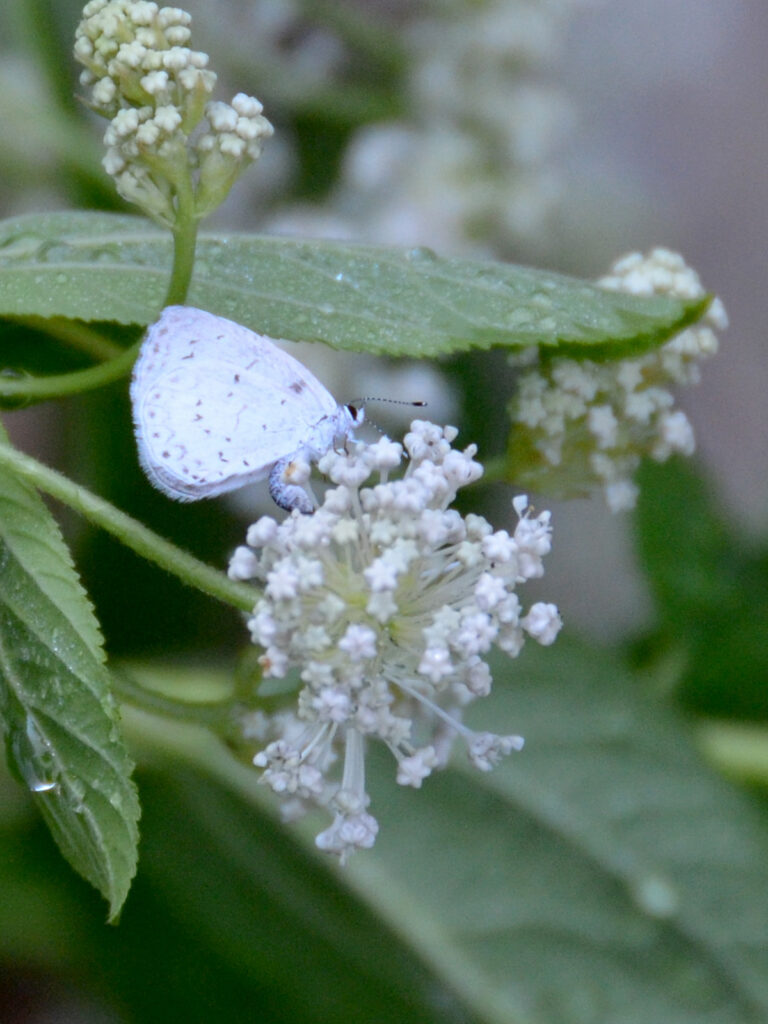
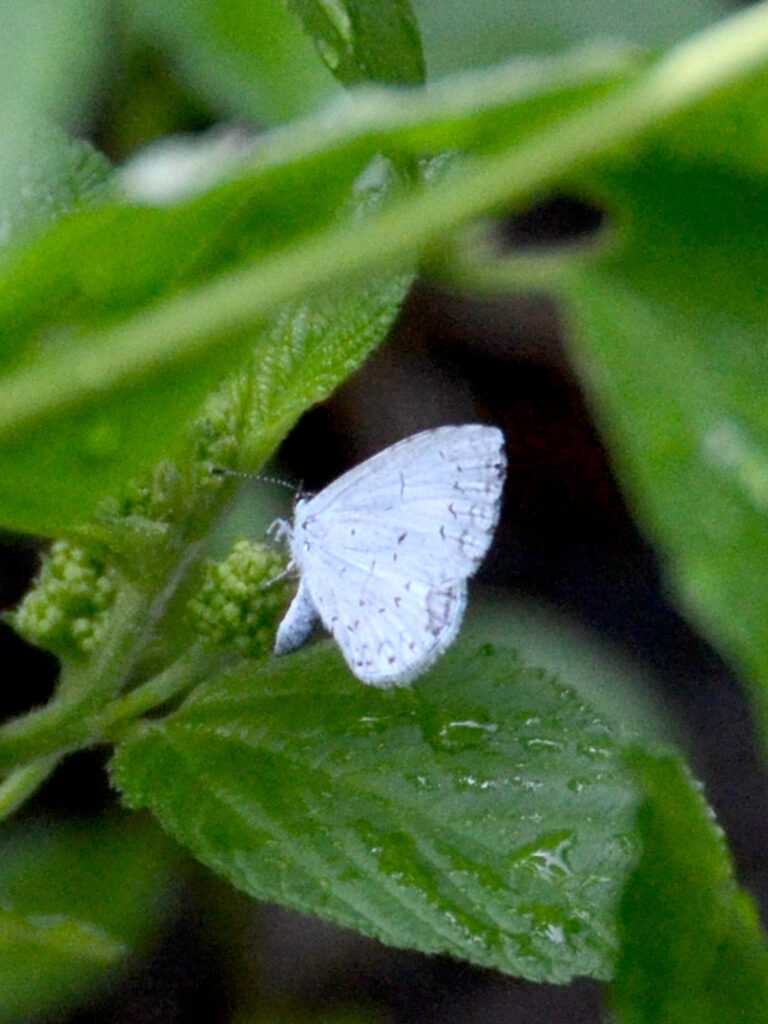
I first spotted this on the New Jersey tea laying eggs. I don’t know if I’ve seen this butterfly in previous years or not; it’s so small and fluttery I might not have noticed it before or identified it as a butterfly. I’ve come to appreciate its ice blue color and its fluttery journey through the yard.
HOST PLANTS: Dogwoods, viburnums, New Jersey tea, blueberry, and meadowsweet
- Learn more:
- Butterflies and Moths of No. Am.: Spring azure
Eastern tailed blue (Everes comyntas)
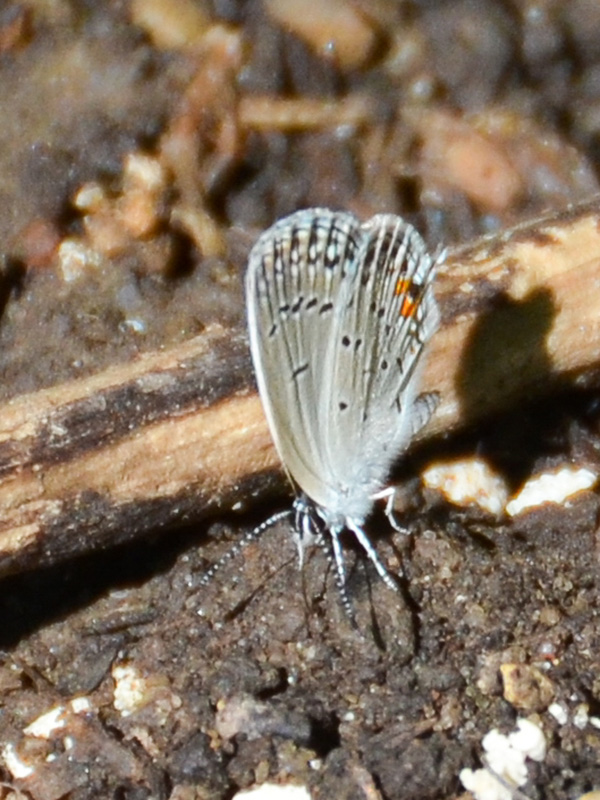
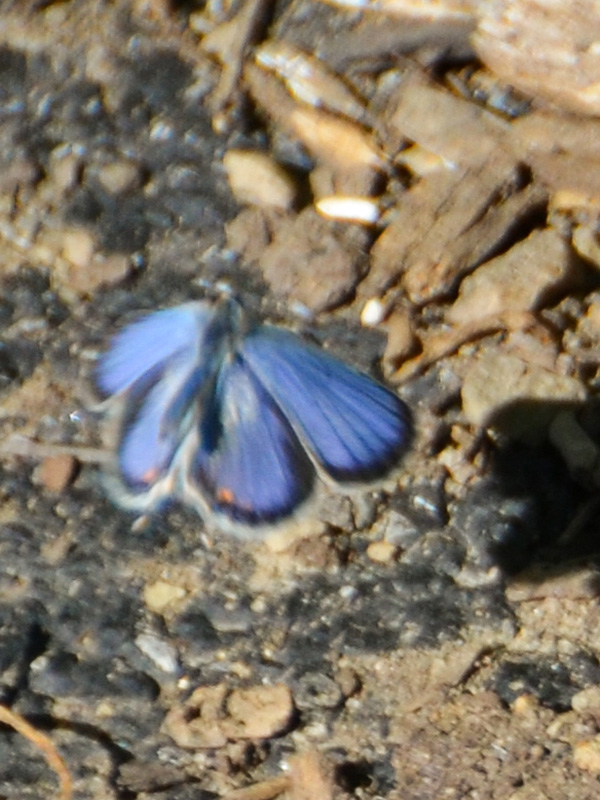
The difference between this and the azures is the orange spot and the tiny little “tail” that’s right above the orange spot, neither of which the azures have. When it’s flying, the upper wings are a brilliant blue (also different from the azures), but since it’s flying, it’s really hard to get a good photo.
- Learn more:
- Butterflies and Moths of No. Am.: Eastern tailed blue
Question mark (Polygonia interrogationis)
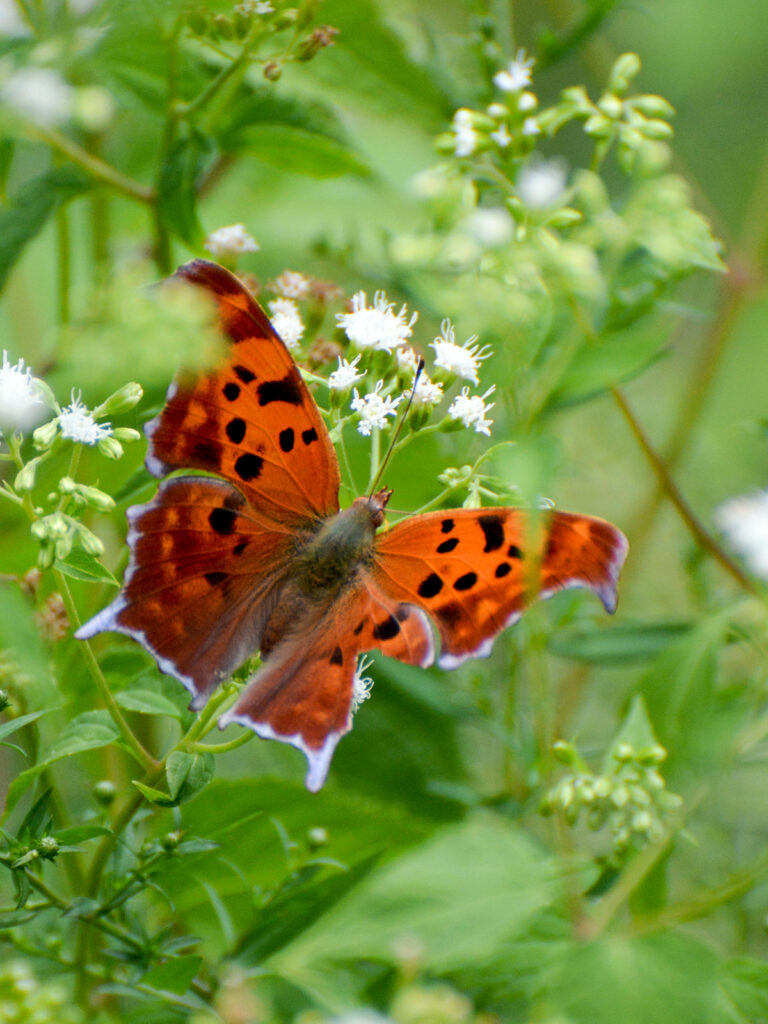

A question mark butterfly. Why does it have the rather odd name “question mark”? See the little white marks on its wing? They’re in the shape of a question mark.
I believe this is a question mark (as opposed to a comma) with its wings open. Usually I just see it with its wings closed, so it’s a treat to see its attractive wings from this viewpoint. The question mark has longer tail projections than the comma and is also larger.
HOST PLANTS: Stinging nettle; also hops, elms, and hackberries
- Learn more:
- Butterflies and Moths of No. Am.: Question mark
Comma (Polygonia comma)
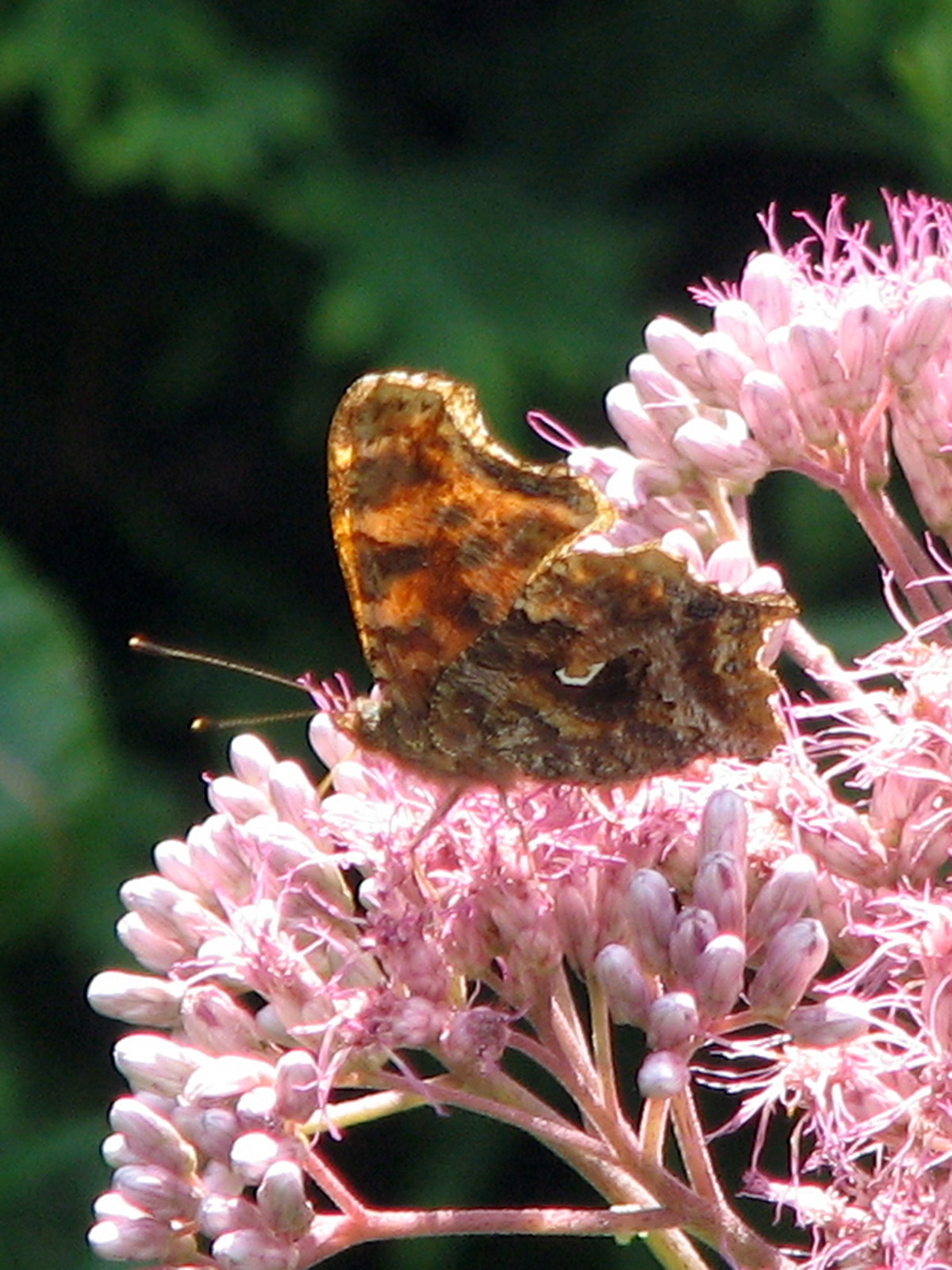
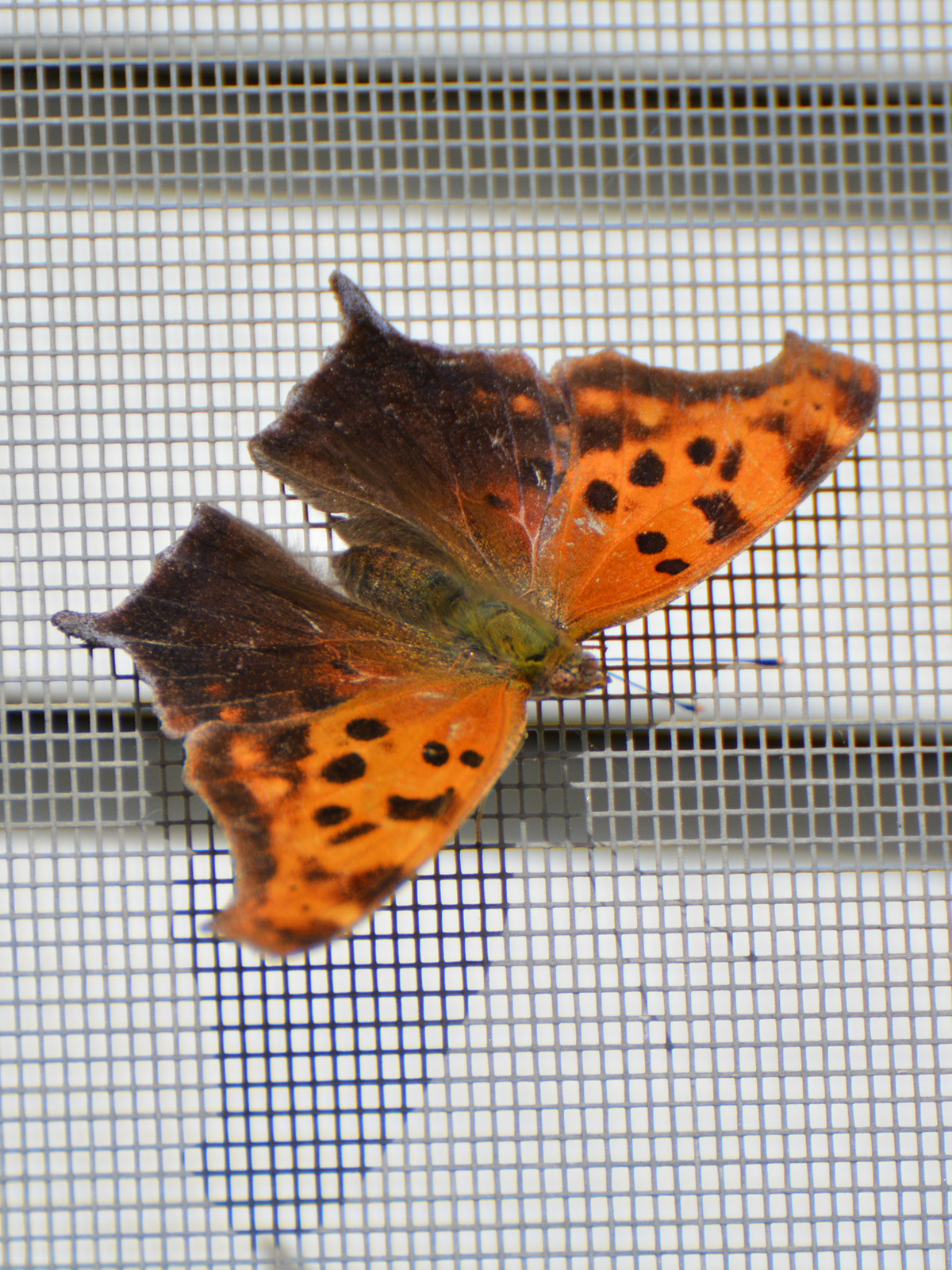
Here’s the other punctuation mark butterfly called the “comma” for a similar reason — the mark is in the shape of a comma. They’re both anglewings — note the angle-shape of the wings. (And that’s “angle,” not “angel.”)
HOST PLANTS: Hops, elms, and nettles
Mourning cloak (Nymphalis antiopa)
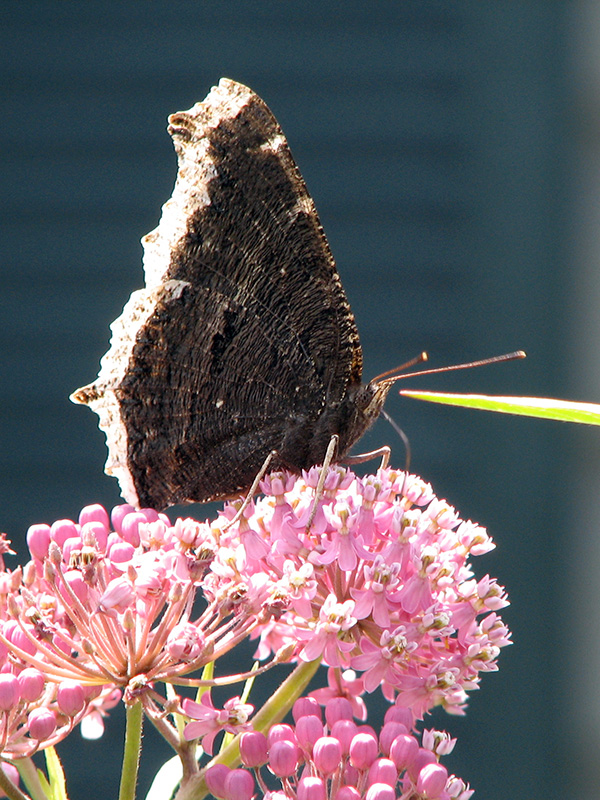
I spotted this one on a swamp milkweed flower in July.
Evidently, though, they prefer tree sap, especially that of oaks, or rotting fruit.
They overwinter as adults, so they’re one of the first butterflies we see when the weather begins to warm in late winter or early spring.
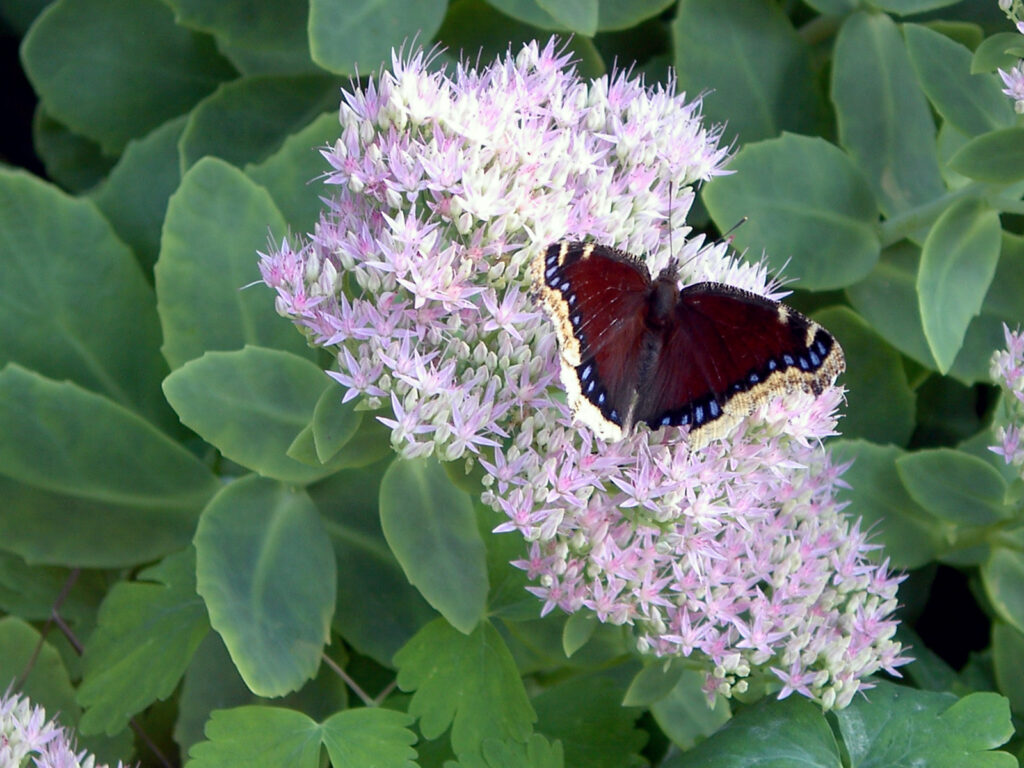
This one is on non-native sedum.
HOST PLANTS: Willows, aspens, elms, birches, hackberry
- Learn more:
- Butterflies and Moths of No. America: Mourning cloak
- Mass Audubon: The myth-busting mourning cloak
- Cool Green Science: The butterfly of spring – Meet the mourning cloak
Red admiral (Vanessa atalanta)
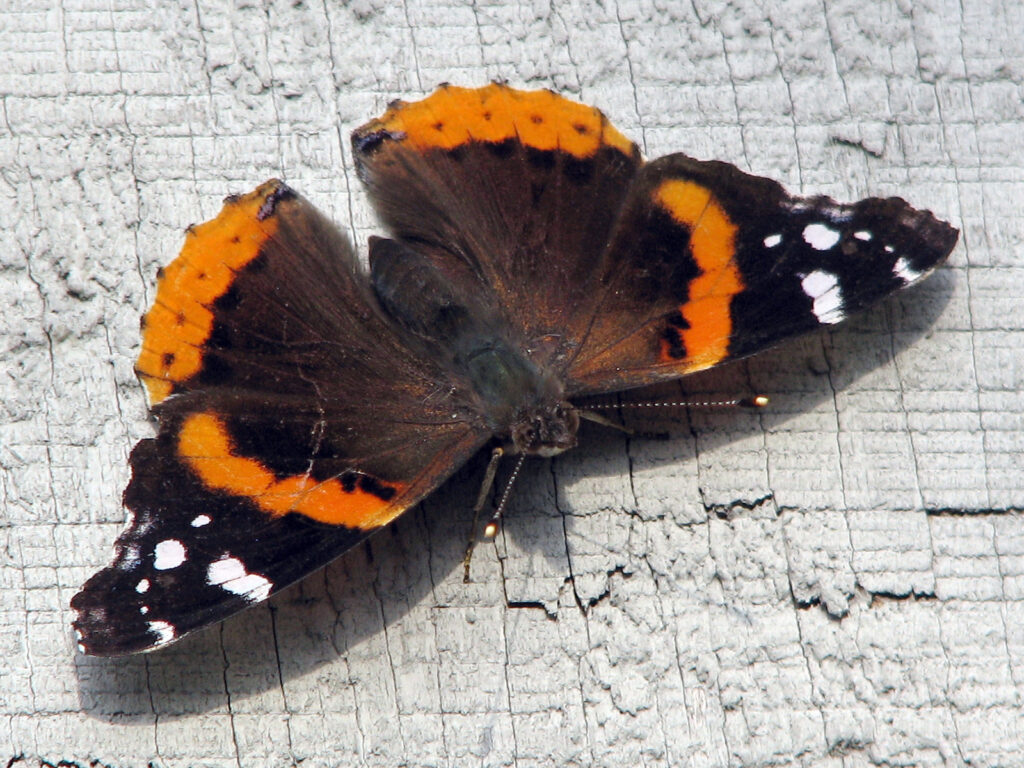
The red admiral butterfly is one of the Vanessa butterflies. We were thrilled to witness one of its big migrations in 2010.
For a couple of weeks we saw these butterflies — just one or two at a time — heading north. They entered and exited the yard at pretty much the same spots right across our backyard. This one stopped for a bit, but generally they stayed “on task” and kept flying. 2010 turned out to be a big red admiral year, with record numbers showing up in Canada.
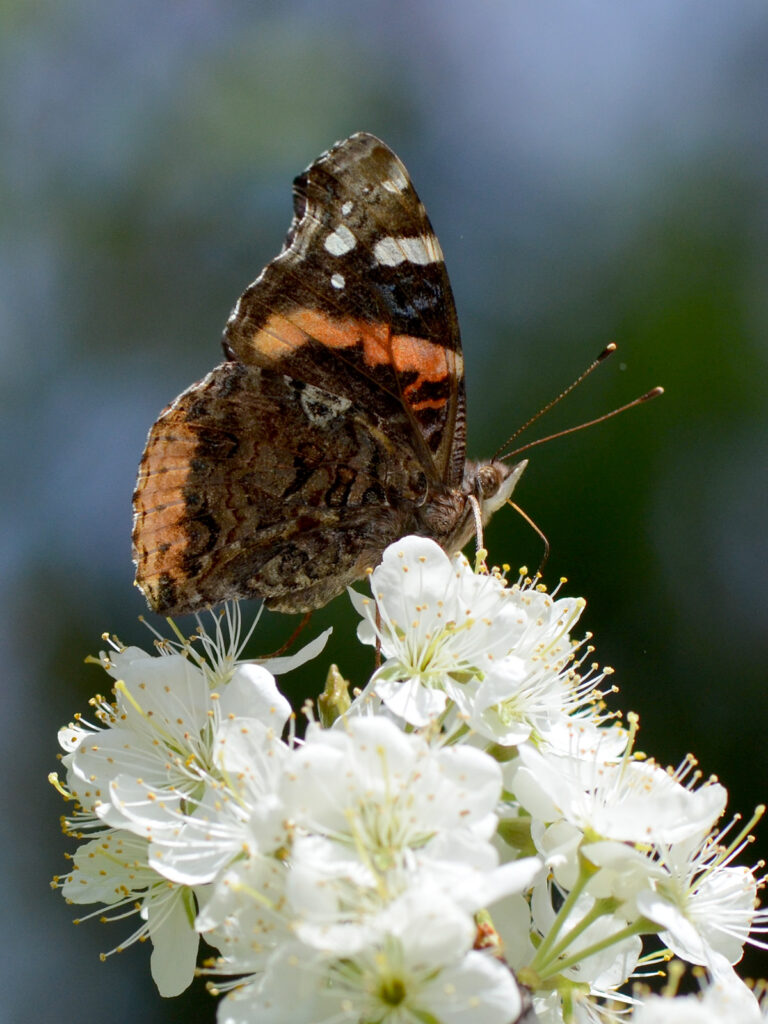
So it’s not just monarchs that migrate — but their migration is different since it’s a one-way migration, not down and back as it is for the monarchs (though not for individual butterflies).
In other words, our red admiral population is replenished from the south each year.
HOST PLANTS: Nettles
- Learn more:
- Butterflies and Moths of No. Am.: Red admiral
